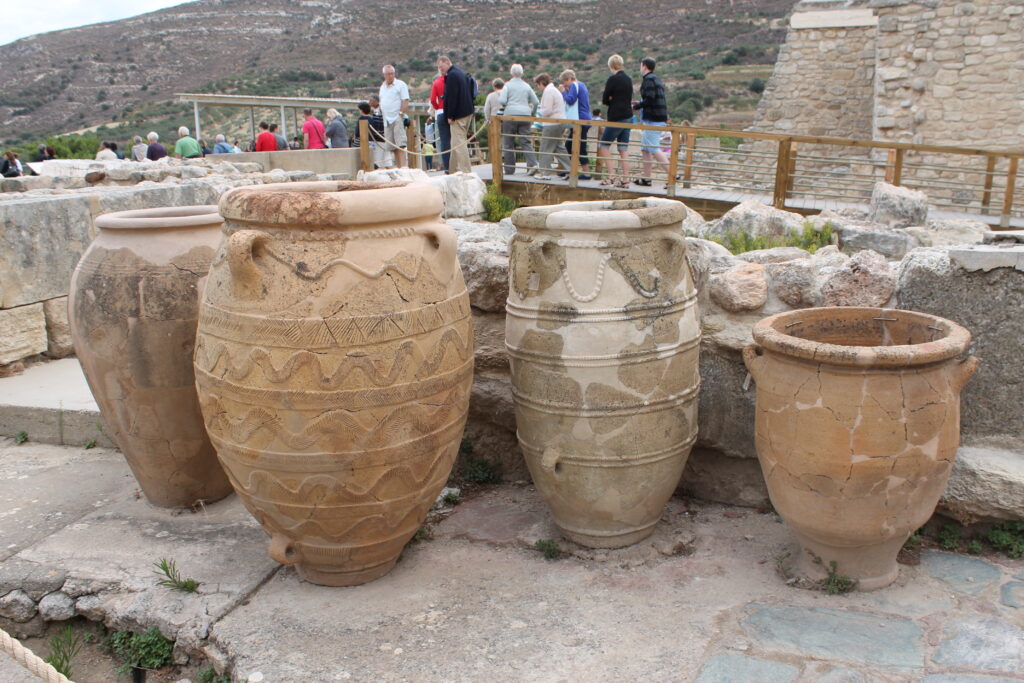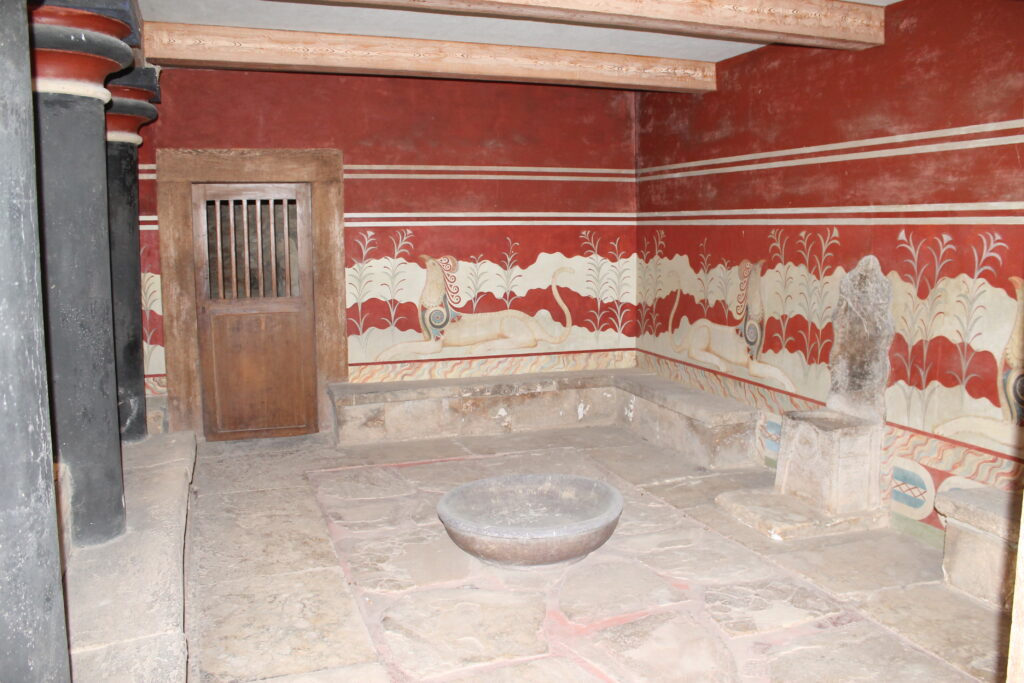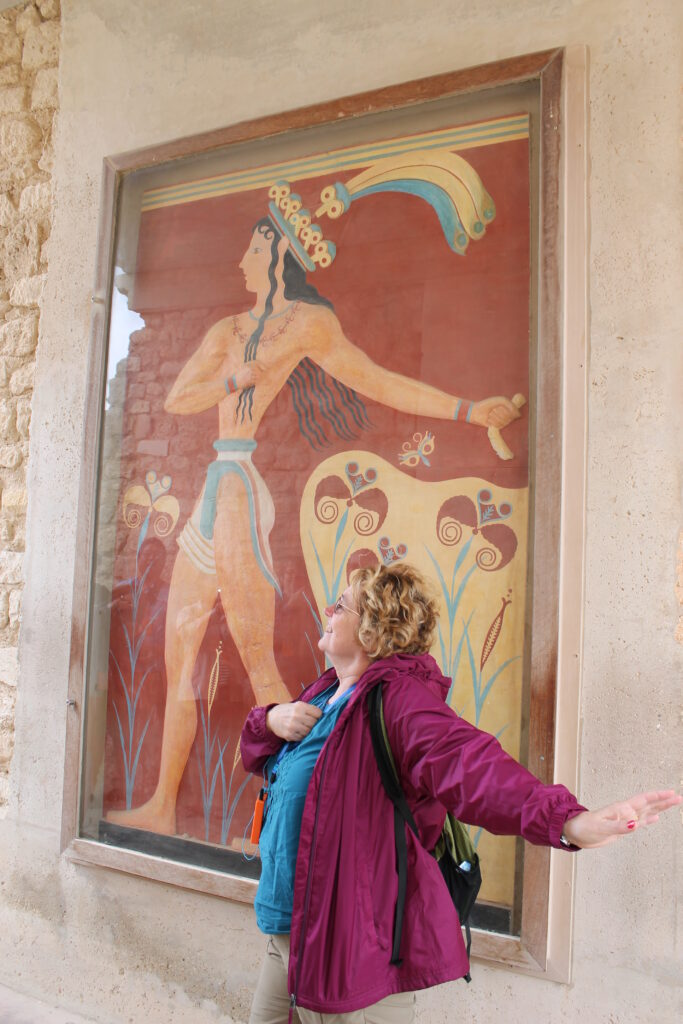Arthur Evans, who excavated Knossos, estimated the original Neolithic settlements on Crete stretch back to 8000 B.C.E. By 2000, the civilization had transitioned from wattle and daub huts to an affluent society marked by mis-named palaces. Misnamed because it is thought they were not simply the abode of the rulers but also governmental, religious and craftsmen centers. The remains of storage rooms were also discovered on this site.
Below are the large storage vessels known as pithy.

Knossos was destroyed several times. Crete is prone to earthquakes and there is a nearby volcano. Until about 1400 B.C.E. Knossos was always rebuilt.
Since the ruins were excavated Knossos has become a major tourist attraction. Some of it has been repainted in what is thought to be the original colors.

Here is one example: the so-called throne room. The lustral basin in the foreground and the griffins (a symbol of the Goddess) indicated that this chamber was probably used for religious purposes.

The above is one of the many frescoes in Knossos (with me goofing around in front of it.). It is called the cup Bearer and is, I think, an example of male Minoan fashions. Both men and women wore their hair with the three tresses over the shoulders and the remainder loose down the back. Headdresses and jewelry was also common to both sexes. and the wasp waist was high fashion.
I based my character Tinos on this piece of art.
Knossos was not the only city found. The ruins of others such as Gournia, to the east, were also excavated. Akrotiri, a Minoan colony, on another island, is currently being dug out from many feet of hardened volcanic ash.
